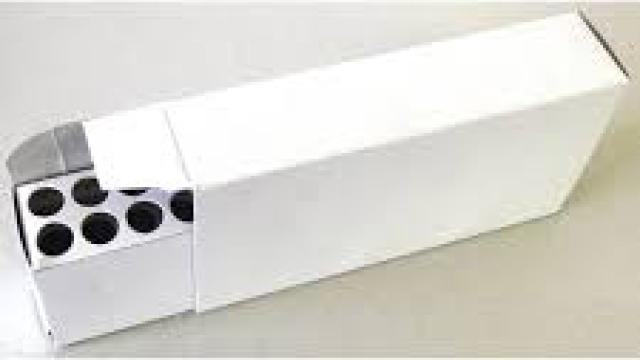Ideally, pipe suppliers use rust-resistant materials to produce seamless pipes. However, the pipes may still develop rust when users expose them constantly to humid environments. The materials are resistant to rusting but not rust-proof. Hence, eventually, they will start to erode.
For example, pipe fabricators can use stainless steel because it is resistant to corrosion. When we say corrosion, we mean stainless steel pipes do not develop rust. Also, these pipes do not react with most of the chemicals. Thus, industries can use them in chemical plants, petroleum industries, offshore drilling, etc.
However, when users use stainless steel pipes and tubes in compromising environments for prolonged periods, the pipes start to show signs of decaying. For instance, when users use them in marine environments, stainless steel pipes may start to erode. The humidity in the air, exposure to water, and even salt can drive corrosion. Salt works as an electrolyte that hastens the rusting process. It helps metals oxidize faster. Hence, marine environments can cause even stainless steel seamless pipes to develop rust.
In order to ensure that the pipes do not give in to corrosion, many manufacturers coat the pipes with a protective layer. Galvanization is a process of coating the pipes using zinc. Does the zinc coating make the stainless steel pipes rust-proof? Well, the answer is no. Zinc does not make the pipes rust-proof but increases the pipes’ lives.
How the galvanization process prevents rusting:
Let us first understand what rusting is. Rusting occurs when a metal reacts with oxygen present in the air and water to produce oxide. Iron is a metal that produces the most amount of iron oxide when in contact with oxygen. What we see is a pale, brownish, and flaky substance on the surface of the iron pipes. The pale brown substance is rust.
Rust flakes away, exposing the fresh iron underneath so that the process of rusting can continue. Thus, eventually, even the seamless pipes become weak. Some metals do not oxidize and do not develop rust. For instance, zinc, aluminum, etc., are metals that do not rust. These metals do oxidize, but the process occurs very slowly.
Pipe manufacturers coat the stainless steel pipes with zinc. When zinc comes in contact with oxygen, it does produce zinc oxide. However, unlike iron oxide, zinc oxide does not flake away. Instead, it forms a protective layer that stops water and oxygen from coming in contact with stainless steel pipes.
In the presence of water, zinc oxide turns into zinc carbonate. Zinc carbonate has a dull gray patina, and it stops chemical erosion even more.
However, users must remember that galvanized carbon steel seamless pipes eventually erode. Some factors affect the quality of the pipes. Here are the factors that can cause the pipes to erode:
● Exposure to sodium chloride or salt can break down zinc carbonate slowly, exposing the metal underneath.
● Sulfur dioxide pollutants can also cause sodium chloride to fail.
● Where the humidity is beyond 60%, the zinc coating wears off, causing the pipes to rust.
● Acid rain can cause severe damage to the surface of the pipes and wash away the galvanized coating.
● Cement can also cause the galvanized coating to wear off because cement has sulfates and chlorides.
● Sometimes users wash and dry the galvanized pipes multiple times. The frequent washing and drying cause the galvanized coating to weaken.
● The zinc coating can come off if the pipes come in contact with hydrogen sulfide. Users may face difficulty in areas near hot springs, volcanoes, sewer systems, etc.
● Even though galvanized stainless steel seamless pipes can withstand moisture, retention of moisture can cause the pipes to erode eventually. For instance, moss and lichen hold moisture. If the pipes are covered with moss, it can create a humid micro-climate, which can weaken the galvanized coating.
Manufacturers recommend considering specific factors when users plan to install galvanized steel pipes. These factors can affect the longevity as well as the performance of the pipes. Here are some of the factors:
Air: The quality of the air can reduce the lifespan of galvanized pipes. Users can use these pipes in intense temperatures, such as in deserts or snow. The pipes will still function and last long. However, the polluted urban air may consist of harmful chemicals that can cause the galvanized coating to fade away faster, reducing its lifespan.
Temperature: Users can use galvanized carbon steel seamless pipes in high temperatures. The pipes can withstand up to 420°C. However, when there is a constant fluctuation in the temperature, the pipes may start to wear off. Besides, if users expose the pipes to harmful chemicals along with high heat, the chances of the pipes corroding increase even further.
Soil: While manufacturers produce galvanized pipes for use in moist areas, they recommend users avoid areas that retain moisture. Hence, when users use galvanized pipes in underground projects, the pipes are constantly in touch with moisture. Wet soil retains moisture for a long time, which exposes the pipes to a moist environment.
However, whether the pipes will decay due to moisture in the solid depends on the type of soil. If the soil is sandy, it will not hold water for too long. On the contrary, muddy soil will take time to dry and, thus, will hold on to moisture for too long.
The final closure:
So, should users choose galvanized seamless tubes for their next project? Will the pipes last longer than standard steel pipes? Is it worth investing in galvanized pipes? The answer to all of these questions is yes.
Even though some factors can affect galvanized pipes and make them erode eventually, the coating wears off very slowly. Hence, it enhances the lifespan of stainless and carbon steel pipes significantly. The galvanized coating protects carbon and steel pipes, which have iron in them. The coating does not let oxygen humidity, and salt come in direct contact with the actual material of the pipes.
As a result, users can make the most out of the stainless and carbon steel pipes. They can improve the lifespan of the pipes by at least 50 years using the galvanized coating on top of them.



